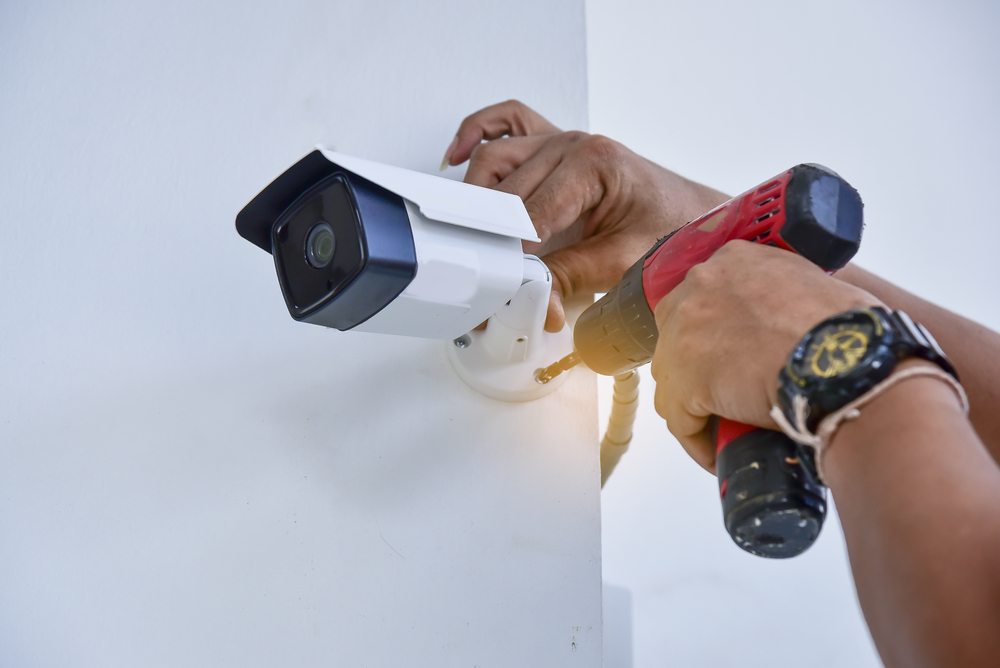
Surveillance vs. Security: What’s the Difference?
February 20, 2023 3:08 pm Leave your thoughtsWhen putting together a package of security measures for your home or business, it’s important to understand what is being installed. One of the most common points of confusion among many customers is the difference between surveillance and security cameras. These two terms are not interchangeable; they represent completely different types of camera systems. It’s important to understand the key differences between these two systems.
Purpose
The primary difference between surveillance and security cameras is their purpose or objective. Surveillance cameras are meant to scan or survey large public areas. They are generally looking for potential threats rather than active crimes. Security cameras are meant to record events taking place in a particular area. Typically, they are installed in private buildings or outside areas and are meant to provide a record or evidence of a crime.
Surveillance cameras are meant to be used in public places, and there can be a lot of variation in how they are monitored. In some cases, these types of cameras are only monitored during large public events, allowing law enforcement and other entities to look for potential threats.
Other surveillance camera systems are put into place to monitor large areas continuously. These cameras might be constantly monitored by security personnel, but in many cases, the footage is analyzed with software that alerts someone if something suspicious is recorded. The goal of surveillance cameras is not just to catch criminal acts. Surveillance cameras may also be used to look for other harmful situations, such as the start of a fire or unsafe traffic conditions.
In fact, surveillance cameras can be used for purposes that have nothing to do with security. Surveillance systems are in use in parks and forests, for example, to record everything from the growth of plants to the movement of birds.
Security cameras, on the other hand, may or may not be monitored by security personnel. They are meant to be a crime deterrent. These cameras are usually placed in private residences, retail locations, or outside locations to identify potentially harmful people. Common examples could include cameras placed near checkout lines to deter shoplifters.
Placement
While both types of cameras can be placed nearly anywhere, their exact placement will depend a lot on the purpose of the camera. Security cameras are usually placed in high-traffic areas and other areas where unsafe incidents could occur. For example, many businesses use security cameras installed around retail locations to deter would-be shoplifters. A private residence may use security cameras to monitor guests during a party; these cameras would discourage anyone from pocketing items from the home or starting a fight with other guests.
Security cameras are typically placed in one area and are programmed to concentrate on a specific part of a business or home’s operation. Many security cameras are actively monitored; that is, they can be tilted or “zoomed in” by a remote user who is observing. Security cameras can be hidden but usually left out in plain sight. Remember that their goal is to deter crime; this means that having people see the cameras reminds them that they are being watched.
Surveillance cameras, on the other hand, are placed in thousands of different locations. Because their purpose often goes beyond security, they are everywhere, from large country estates to factory floors. Surveillance cameras are typically positioned to cover large areas. For example, cameras may be placed to look over several hundred acres of forest to spot early signs of wildfires.
In factories, surveillance cameras may cover the entire factory floor, looking at everything from which employees are actively working to scanning for unsafe working conditions. Security cameras could be placed on each individual line. They could be set up to observe specific parts of an employee’s routine to ensure that they followed all safety protocols or that workers were not taking products home with them.
Technology
Both types of camera systems have been around for decades, but there are some technological advances that potential users of these systems should be aware of. In years past, the big distinction between surveillance and security cameras was how they were monitored. Security cameras had a physical person watching them at all times, while surveillance cameras would record video that could be reviewed later if an incident occurred.
Today this is not always the case. Advancements such as facial recognition software and motion tracking have made it so that security cameras do not always have to be monitored at all times. Instead, security personnel can review a “highlight reel” or events from surveillance cameras. Security cameras are often outfitted with software that alerts security personnel if certain conditions are met.
A common example is alerts sent to a phone or other mobile device when motion sensors detect someone moving past a surveillance camera. Personnel can quickly review the footage and determine if additional action is warranted. Similarly, security cameras focused on a checkout lane may signal if the motion detection software believes that a customer is placing items into their bag without paying for them.
This technology allows security personnel to monitor multiple areas simultaneously while having a “backup” to look for signs of trouble.
If you’re considering installing a security or surveillance system, call our office. At Advance On-Site Protection Security, we have years of experience helping our customers determine the right type of security for their homes or business. We would love the opportunity to help you.
Categorised in: 24-Hour Security, Home Surveillance, Mobile Security
This post was written by admin
